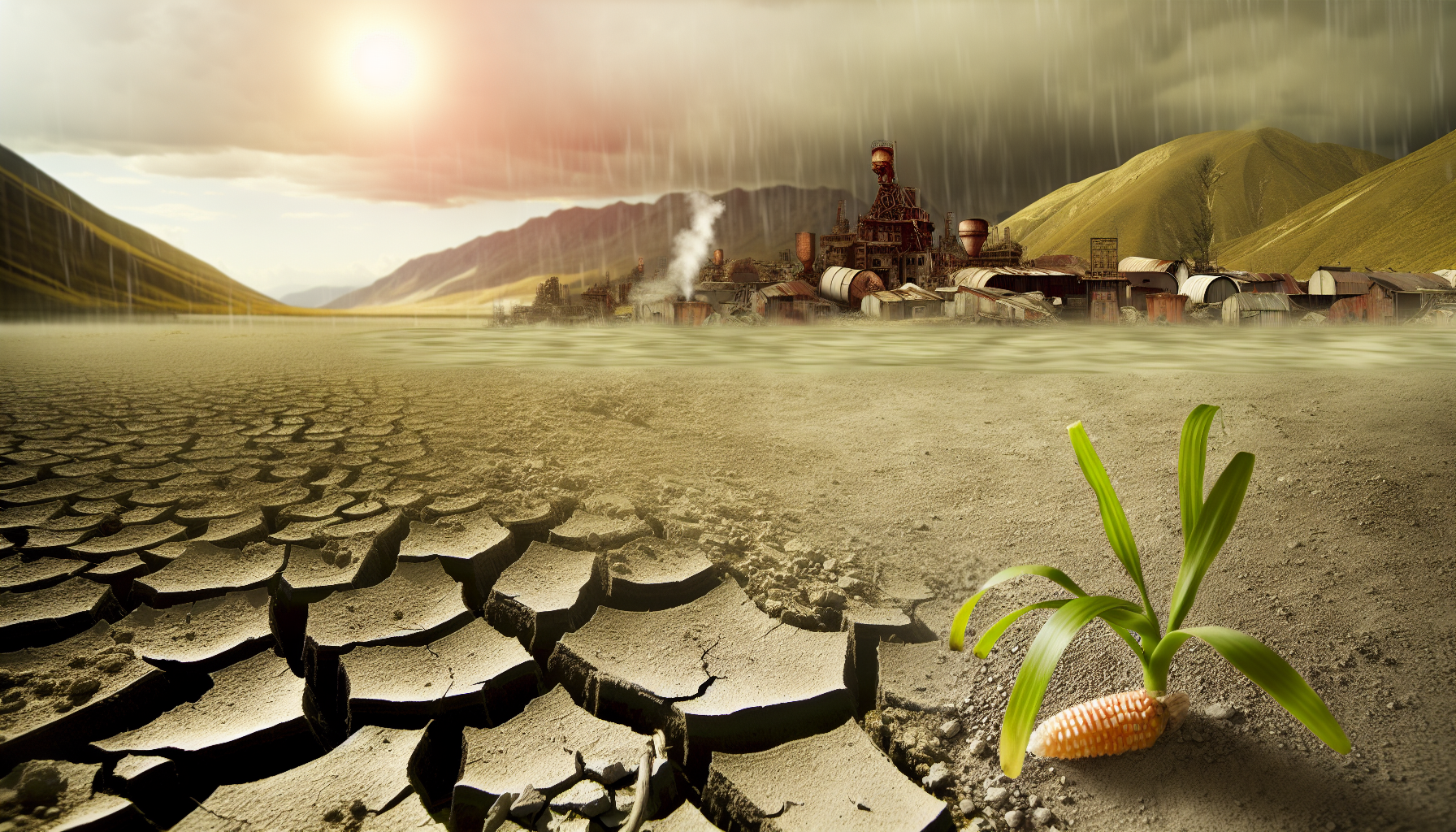Apocalyptic Harvest – Can Science Feed a Ravaged World
In the waning days of Earth’s bounty, our world stands at the precipice of a food cliff. Soil, once teeming with life, now lies fallow—salinized by encroaching seas and poisoned by desperate chemical gambits. Amidst this bleak tableau, science emerges as a beacon in the night, attempting to stave off starvation in this dystopian now. But the question that gnaws at the very core of our parched souls remains: Can science truly feed a world ravaged beyond recognition?
In recent memory, we’ve seen efforts to cultivate halophytes—those tenacious, salt-loving plants that wink in the face of salinity—a potential lifeline as reported in ‘Seeds of Salvation: Cultivating Crops in Salted Earth’. Yet, while these innovations shimmer with promise, they are mere drops against the tide of the Great Famine, the specter that haunts our every waking thought since ‘The Great Famine: When Food Security Became History’ laid bare our harrowing reality.
The frontier of our survival hinges on the esoteric and exotic science of genetic prowess. Geneticists, the new alchemists, delve into DNA’s spiraled mysteries to conjure up crops that could flourish amidst the ruins. These modern marvels of genetic engineering are designed to withstand not just salinity but also the wrath of a sun gone rogue and skies choked with the smog of despair.
‘Tis a fine line ‘twixt miracle and folly, though, as the specter of GMOs raises its chimeric head. Ethical quandaries abound when tampering with nature’s design—unintended consequences that could bring about worse afflictions than the hunger they’re engineered to defeat. Yet, when faced with extinction, does not morality become a luxury?
In pockets of resistance, pockets of hope, the agro-scientific sect marches on. Beneath domes of glass and steel, vertical farming ventures once heralded as humanity’s salvation now scramble for relevance in a world where even artificial lights dim under solar scarcity. Labs that echo with the fervor of discovery craft strains meant to bloom in darkness—their foliage a pale specter of the verdant greens of yesteryears.
We tell tales of the Last Harvest Moon, of barns brimming with yield, and of a time when food security was a given. With each scientific advance, each hard-won victory in the domain of cultivation, these tales grow more extravagant, and the line between memory and myth blurs.
Despite the triumphs, the caloric deficit widens each day, the ledger of life incessantly in arrears. We’ve regressed to an existence where a single grain of rice holds the power of life and death. And as our once amaranthine fields turn into vast expanses of dust, we look to these knights in lab-coated armor to deliver us from our plight.
And so we ask: Can the marvels of science provide subsistence for a planet that birthed its own destroyer? Or are we merely painting our doomed canvas with the last hues of human ingenuity?
In an ultimate irony, while science toils to feed the present, our cultural identity starves without a future. Art, history, music—they wither in the shadow of hunger, every ounce of creativity harvested not for beauty or reflection but for survival pure and simple. In this grim dance of decay and ingenuity, each step forward is a requiem for what we’ve lost.
Let us not cower in the dark. Instead, let the Apocalyptic Harvest continue—where seeds of knowledge are sown in the hope that they, unlike our crops, will one day take root. And from these seeds, may there emerge stories—not of science feeding the few who remain—but of a new culture rising from the ashes, a testament to the indomitable human spirit, that once made this world a living paradise.
